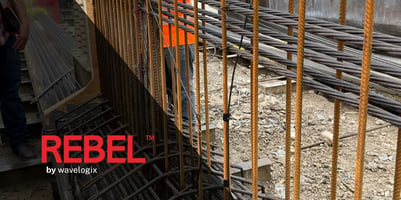Municipalities across the country face a common challenge: balancing limited staff resources with...
The True Cost of Waiting: How Cylinder Testing Delays Hurt Communities
Every day a road, sidewalk, or utility project remains closed is another day of disruption for residents, lost productivity for businesses, and frustration for everyone involved. Municipal leaders face growing pressure to deliver infrastructure more quickly and safely, but traditional testing methods often slow things down.
The Challenges Facing Municipal Crews

Municipalities often work with lean teams and limited resources, making time spent on concrete testing a direct tradeoff with other critical work. Unlike large contractors, they don’t have dedicated testing labs or staff to spare. Every cylinder that needs to be made, cured, and broken takes time away from other important tasks.
At the same time, public expectations are rising. Residents want safer roads, quicker repairs, and minimal disruption. That puts municipalities in a tough spot — balancing speed, safety, and staff efficiency.
As one industry brief notes, “Delays reduce income, cause cost inflation, legal disputes, and productivity loss.” In fact, a recent survey reflects this reality: “Municipalities cited potholes, maintenance budgets, and staff as top challenges in street upkeep.”
The Cylinder Testing Problem
Cylinder testing has been the default for decades, but it’s far from perfect for fast-moving maintenance and rehabilitation work. Results often lag behind real project needs, forcing municipalities to:
- Keep roads closed longer than necessary.
- Spend more time and money managing tests.
- Risk opening too soon if data is unreliable.
These delays not only cost money but also erode community trust. Residents notice when projects linger, and municipalities take the blame.
Why Real-Time Concrete Strength Data Matters for Cities
Real-time concrete sensors provide in-place strength data that helps municipalities decide with confidence when to reopen roads, sidewalks, and utilities. Unlike maturity methods, modern systems are calibration-free and work across mixes, moisture levels, and temperatures. Solutions that meet AASHTO T-412—such as REBEL® sensors —provide data municipalities and DOT engineers can trust.Stronger Communities Through Smarter Testing
For municipalities, the benefits go beyond faster openings. With real-time strength data, teams can:
- Free up staff to focus on additional projects.
- Reduce liability by ensuring true in-place strength before opening.
- Stretch budgets by saving time and materials.
- Improve resident satisfaction by minimizing disruption.
The Bottom Line
Communities thrive when infrastructure is reliable, safe, and delivered on time. By pairing or replacing outdated methods with real-time strength data, municipalities can better serve residents and manage resources more effectively.
Want to see how cities are reopening sooner with in-place data? Explore a short demo of REBEL® Concrete Strength Sensors or talk with our team about a small pilot.
FAQs: Municipal Concrete Testing & Reopening
Do we still need cylinder break tests if we use concrete sensors?
Many cities start with a hybrid approach—fewer cylinders for verification while relying on in-place data for day-to-day decisions. Over time, some reduce cylinder frequency where specs allow.
Will concrete sensors work across our different mix designs and weather?
Yes. Calibration-free systems are designed to handle different mixes, temperatures, and moisture conditions, providing consistent in-place readings.
How does this align with DOT and engineering standards?
Look for solutions that adhere to AASHTO T-412 and local specifications. Systems like REBEL® are built with these requirements in mind.
What’s the quickest way to test out concrete sensors to see if it's right for us?
Pilot on a small resurfacing or utility cut project, run limited cylinders in parallel, and compare time-to-open with in-place data.

/Wavelogix%20Webinar%20Smart%20Concrete%20Solutions%20for%20Municipalities%20-%20webinar.jpg?height=200&name=Wavelogix%20Webinar%20Smart%20Concrete%20Solutions%20for%20Municipalities%20-%20webinar.jpg)


